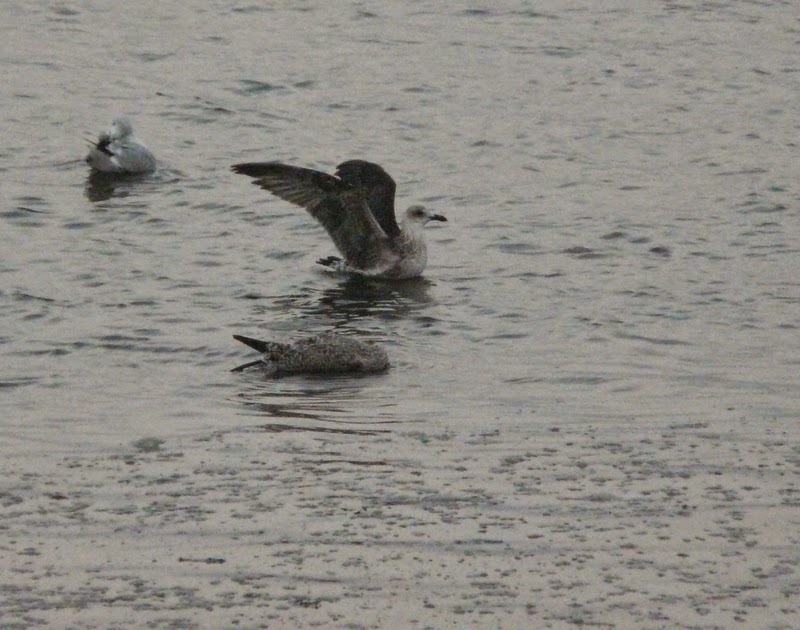I'm probably way wide of the mark here but this juvenile 'lesser black-backed gull' struck me as being really different. For me it ticks a lot of 'fuscus' boxes, being very small, long-winged and caspian gull-like in demeanor - a 'feel' emphasised by a tiny head and slim bill. I don't think it can be positively identified with any certainty but I'd be really grateful for any comments.
Note the dark breast markings contrasting with the whitish head and breast. The greater coverts are extensively dark-based (don't think that's necessarily a 'fuscus' feature) and the primaries look long, though how many peek out from beyond the tertials is difficult to ascertain because they lack pale tips.
No sign of moult but pale edges to mantle, scaps and wing coverts already worn giving an overall very dark chocolate-brown appearance - not sure if this has any significance.
It would be nice to see cachinnans-like pale axillaries and underwing covert patches here but I don't think this rules out 'fuscus'. Equally it doesn't help!
Structurally it looks so cachinnans-like whilst swimming - long neck, small head and long primaries.
Barely a hint of a primary window and relatively unmarked uppertail coverts.
With a juv Herring Gull on the right.
Lovely long primaries and weakly-marked, pale tertial tips.
A very quick look at Orcombe Point this afternoon revealed my first stonechats of the autumn, 2 wheatear, 3+ meadow pipit and 5 phyllosc sp. As well as the interesting lesser black-backed off Mudbank this morning, there were 3 yellow wagtail. Yesterday there were 3 gadwall, 2 shoveler and 8+ mediterranean gulls.














Hi Matt, certainly a striking bird and I can understand your thinking. I've no experience of nom. fuscus so my opinion is of little value but I do think that a certain identification of an unringed 1CY is going to be near impossible. I'd better leave this one to the experts (I've asked Martin Elliott to take a look) but to my eyes your bird doesn't look that different structurally to some small female graellsii - on the spread wing for e.g. P10 is not longer than P9, as it is on many fuscus I read. Plumage wise you know how variable these birds can be in just the local birds. Good stuff though, keep looking!
ReplyDelete